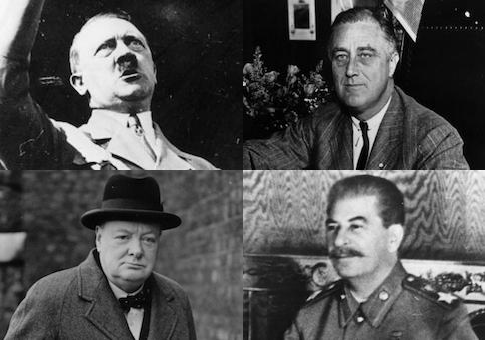While visiting Hillsdale College this week, I was unexpectedly bequeathed a gift. When I arrived at the house where I am staying I discovered on the buffet table in the kitchen a small collection of books on military history, grand strategy, and World War II. Among them was the bound galley of Victor Davis Hanson's The Second World Wars, published Tuesday by Basic Books. Having heard advance praise for the book, I picked up the hefty galley. I have not put it down since.
Most surveys of the global conflagration between September 1939 and September 1945 are chronological. They begin with the rise of Adolf Hitler to power in Germany, describe the appeasement policy of the British and French governments that allowed him to seize territory nonviolently during the latter half of the 1930s, mention the Japanese invasion and occupation of
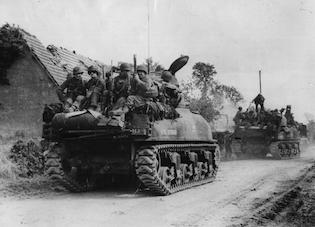
Manchuria, and proceed through the blitzkrieg in Poland, the collapse of France, the Battle of Britain, Operation Barbarossa, the Japanese attack on Pearl Harbor, American entry into the war, Operation Torch, the campaigns in Sicily and Italy, the battles of Midway and Stalingrad, island hopping in the Pacific, Operation Overlord, Operation Market Garden, the Battle of the Bulge, and so on until the hammer and sickle are raised over the smoking ruin of the Reichstag and the firebombing of Tokyo and the dropping of atom bombs on Hiroshima and Nagasaki bring the war to a devastating close.
But Victor Davis Hanson's history is thematic. The war is dissected into its constituent parts, allowing the historian to examine at length aspects of the conflict that would be given short shrift in a narrative account. What is remarkable is that despite the absence of a traditional storyline the reader's attention never flags. Indeed, I have learned more in a few days with this dog-eared galley than I have in a lifetime of interest in World War II.
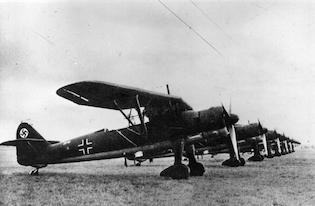
For starters, it had never occurred to me how unique and horrifying it is that the Axis powers killed more men and women than the Allies despite losing the war. Typically, Hanson observes, it is the other way around. He also emphasizes the fact that World War II was the first modern war in which the combatants consciously targeted civilian populations, through strategic bombing, rocket, napalm, and atomic attacks, and in the case of the Axis ethnic cleansing and genocide.
Hanson draws the reader's attention to certain details that seem obvious in retrospect but take on a greater significance when considered anew. Great Britain, for example, "was the only Allied power that fought the entire war against Germany and its Axis partners from September 3, 1939, to Japan's formal surrender on September 2, 1945, in Tokyo Bay." And it was by far the weakest of the allies, making its steadfastness more remarkable still. Of the two other Allied powers, the United States did not enter the war until December 1941, and then only against Japan until Germany and Italy declared war on America four days later. As for the Soviet Union, it began the war as an ally of Hitler and did not switch loyalties until the Nazis began racing toward Moscow in June 1941. The Axis was equally unstable. "Unlike the Allied alliance," Hanson writes, "the Axis league was predicated not in reaction to what the enemy had done but entirely on ephemeral perceptions of Germany winning the war and ensuring a favorable postwar settlement."
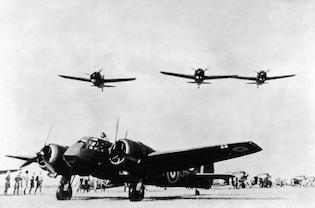
Hanson's disjunctive method, his insistence on seeing the war through one lens before moving on to another, has the effect of giving the story of World War II a dynamism and unpredictability missing from more traditional histories. His argument is that World War II was not a single conflict but several, ranging the expanse of the globe, each varying with the arrival and departure of advanced technologies, sophisticated ideologies, national armies, and legendary statesmen. What started as a territorial fight along Germany's eastern border was transformed into a global war of total victory by the entirely unpredictable and contingent events of Operation Barbarossa, Pearl Harbor, and Germany and Italy's declaration of war against the United States. "Despite the wartime propaganda that followed, there were few common fault lines of religion, race, or geography to make sense of this confusing conflict—much less common methods of conducting the fighting," says Hanson. Lost into this vortex were the souls of some 60 million people, most of them civilians.
As I make my way through this verbal museum of the largest and deadliest war in human history, two themes seem of particular relevance to the present moment. The first is the importance of technology to victory in combat. Hanson's chapter on the air war is gripping not only in its evocation of Stukas, Spitfires, Mustangs, Zeros, Messerschmitts, and B-17s, but also in its depiction of the novelty and power of air supremacy. Hanson demonstrates that Axis propaganda and ambition obscured a much lower technological and productive capacity than the Allies enjoyed even at the outset of the war. Advances in aircraft and radar gave the British and later the Americans the advantage. The incredible number of U.S. aircraft carriers brought a greater advantage still. (The Nazis had none.) Nazi research and development was scattershot and halfhearted, subject to Hitler's crazed imagination and tumultuous decision-making. The Germans may have deployed the first rocket jet and long-range ballistic missile, but they lacked the capacity for sustained large-scale work such as the Manhattan Project.
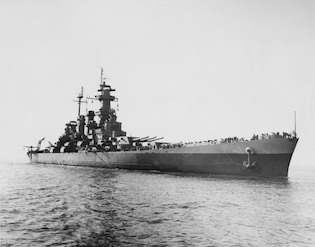
Another pertinent theme of this book is the grandeur and fragility of deterrence. "Throughout history," Hanson writes, "conflict had always broken out between enemies when the appearance of deterrence—the material and spiritual likelihood of using greater military power successfully against an aggressive enemy—vanished." We often think of deterrence in quantitative terms, as a function of how many missiles we have, how many troops in uniform, how many carriers or submarines or Global Hawks, how many artillery batteries are deployed across the DMZ. But note that Hanson places equal weight on the invisible aspects of deterrence, on a nation's fighting spirit. "By any fair measure," he says, "Germany in 1939—in terms of the number and quality of planes, armor, manpower reserves, and industrial output—was not stronger than the combined French and British militaries—or at least not so strong as to be able to defeat and occupy both powers." Yet the British government allowed Hitler to maximize his position and France surrendered to the invading Nazis in a matter of weeks because they were too tired of war to risk standing in the right.
"Every civilization, if it is to survive, must be ready and willing to use force against those who, reverting to savagery, threaten to corrode it from within, just as it must be ready and willing to use force against those—either savage or ordered by a different civilization—who threaten to destroy it from without," wrote James Burnham, who served in the Office of Strategic Services during the war, in 1961. Today, her economic and cultural and military power greater than any in the world, do the leaders and elites of the United States possess the will to deter her enemies from transgressing boundaries and violating national sovereignty? It is a question to ponder as one reads through the great works of history, works such as Gibbon's Decline and Fall of the Roman Empire, Carlyle's French Revolution, and Hanson's Second World Wars.
